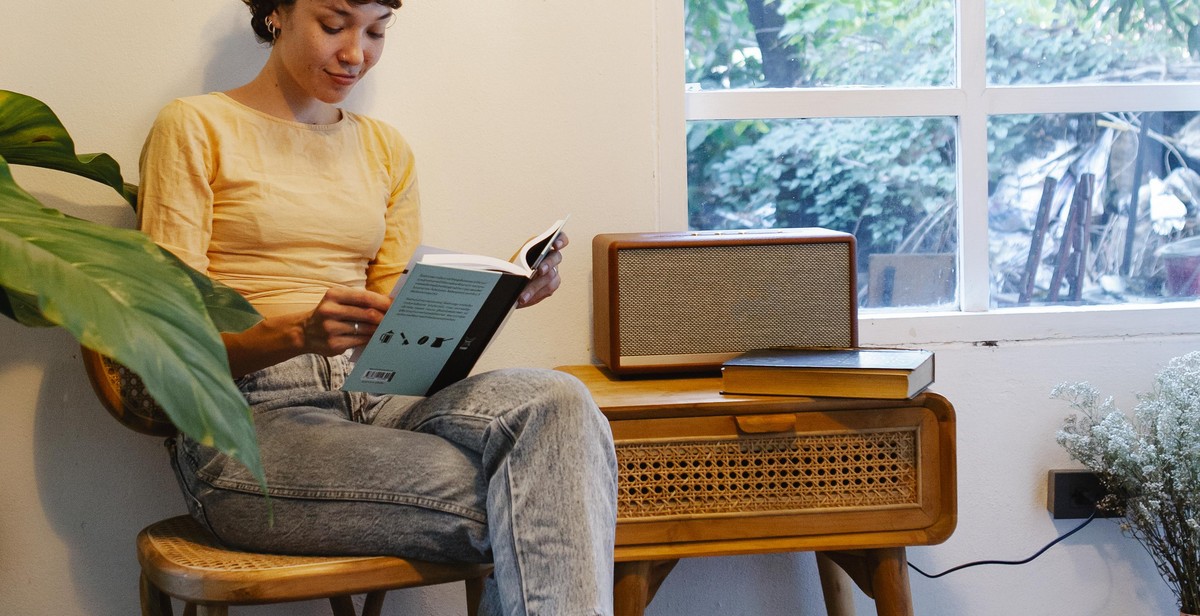How to Choose the Right Reading Lamp: Illuminating Your Books for Optimal Reading Experience
Reading is a fantastic way to unwind, expand your knowledge, and improve your mental health. However, reading in poor lighting can be detrimental to your eyesight and overall reading experience. This is where a reading lamp comes in handy.
Why a Reading Lamp is Important
A reading lamp provides the necessary lighting to read comfortably without straining your eyes. It also helps to create a cozy and inviting atmosphere, making your reading experience more enjoyable. Moreover, a reading lamp can help you to focus better and avoid distractions, especially if you’re reading in a shared space or a busy environment.
Choosing the right reading lamp is crucial to ensure that you get the most out of your reading experience. There are various factors to consider, including the type of light, the brightness level, the lamp’s design, and your personal preferences.
In this article, we’ll explore the different types of reading lamps available, their features, and how to choose the perfect one for your needs. Whether you’re a book lover or a student, you’ll find valuable tips and information to help you select the right reading lamp that will enhance your reading experience.

Factors to Consider When Choosing a Reading Lamp
Reading lamps are an essential addition to any reading nook or workspace. They provide the necessary light to help reduce eye strain and increase focus. However, with so many options available in the market, choosing the right one can be overwhelming. Here are some factors to consider when choosing a reading lamp:
Brightness and Color Temperature
The brightness and color temperature of a reading lamp are critical factors to consider when choosing one. Brightness is measured in lumens, and the ideal range for a reading lamp is between 450 to 800 lumens. Anything less than 450 lumens may not provide enough light, while anything over 800 lumens may be too bright and cause eye strain.
Color temperature is measured in Kelvin and refers to the warmth or coolness of the light. The ideal color temperature for a reading lamp is between 2700K to 3000K. This range provides a warm and cozy atmosphere that is perfect for reading.
Lighting Direction
The direction of the light is another factor to consider when choosing a reading lamp. A lamp with an adjustable arm or shade allows you to direct the light where you need it. This feature is especially essential if you like to read in different positions, such as sitting up or lying down.
Size and Design
The size and design of the reading lamp are also crucial factors to consider. The lamp should be proportionate to the size of your reading space and should not take up too much room. Additionally, the design of the lamp should complement the decor of your space. There are various styles of reading lamps available, from modern to traditional, so choose one that suits your style.
| Brightness | Color Temperature | Lighting Direction | Size and Design |
|---|---|---|---|
| 450-800 lumens | 2700K-3000K | Adjustable arm or shade | Proportionate to space and complements decor |
By considering these factors, you can choose a reading lamp that provides the perfect lighting for your reading needs.

Different Types of Reading Lamps
Reading lamps come in different shapes, sizes, and styles. Each type of reading lamp has its own unique features and benefits. Here are the three most common types of reading lamps:
Table Lamps
Table lamps are the most common type of reading lamp. They are perfect for use on a desk or table and can be easily adjusted to provide the right amount of light for reading. Table lamps come in different sizes and styles, making them suitable for any room in the house. Some table lamps have adjustable arms that allow you to direct the light where you need it most. Others have dimmer switches that let you adjust the brightness of the light to suit your needs.
Floor Lamps
Floor lamps are another popular type of reading lamp. They are ideal for use in larger rooms where a table lamp may not provide enough light. Floor lamps come in different styles and sizes and can be easily moved around the room. Some floor lamps have adjustable heads that allow you to direct the light where you need it most. Others have dimmer switches that let you adjust the brightness of the light to suit your needs. Floor lamps are also great for creating a cozy ambiance in a room.
Clip-On Lamps
Clip-on lamps are a great option if you don’t have a lot of space. They can be attached to the edge of a desk or table and provide direct light for reading. Clip-on lamps are also great for traveling and can be easily packed in a suitcase. They come in different sizes and styles and can be adjusted to provide the right amount of light for reading. Some clip-on lamps have flexible arms that allow you to direct the light where you need it most.
| Type of Lamp | Pros | Cons |
|---|---|---|
| Table Lamp | Adjustable, suitable for any room, dimmer switches available | May not provide enough light for larger rooms |
| Floor Lamp | Adjustable head, suitable for larger rooms, dimmer switches available | Takes up more space than a table lamp |
| Clip-On Lamp | Compact, easy to travel with, adjustable | May not provide as much light as a table or floor lamp |

Additional Features to Look For
Aside from the basic factors to consider when choosing a reading lamp, there are additional features that can enhance your reading experience further. Here are some of the features you should look for:
Adjustable Arm and Head
An adjustable arm and head allow you to direct the light exactly where you need it. This feature is particularly useful if you like to switch between reading physical books and e-books on your tablet or e-reader. With an adjustable arm and head, you can easily position the light to reduce glare and eyestrain.
Moreover, an adjustable arm and head give you the flexibility to change the height of the lamp as well. If you like to read in bed, you can adjust the lamp to a lower height to avoid disturbing your partner’s sleep.
Energy Efficiency
Energy-efficient lamps not only help you save on your electricity bills but also reduce your carbon footprint. LED lamps are the most energy-efficient option as they use up to 80% less energy than traditional incandescent bulbs. They also last up to 25 times longer, which means you won’t have to replace them as often.
Another energy-efficient option is a lamp with a dimmer switch. A dimmer switch allows you to adjust the brightness of the light according to your needs. You can lower the brightness when reading in low light conditions or increase it when reading small print.
Light Bulb Compatibility
Make sure that the lamp you choose is compatible with the type of light bulb you prefer. Some lamps only work with specific types of bulbs, such as LED or CFL bulbs. If you prefer incandescent bulbs, make sure that the lamp you choose can accommodate them.
Additionally, consider the wattage and color temperature of the bulb. A higher wattage bulb provides brighter light, but it also consumes more energy. On the other hand, a lower wattage bulb is more energy-efficient but may not provide enough light for reading. Color temperature refers to the warmth or coolness of the light. A warmer light is more yellow, while a cooler light is more blue. Choose a color temperature that suits your preference and doesn’t strain your eyes.
Conclusion
By considering these additional features, you can find a reading lamp that not only illuminates your books but also enhances your reading experience. An adjustable arm and head, energy efficiency, and light bulb compatibility are just some of the features you should look for when choosing the right reading lamp for you.

Conclusion
Choosing the right reading lamp can significantly improve your reading experience, reduce eye strain and enhance your productivity. By considering factors such as the type of bulb, brightness levels, color temperature, lamp design and adjustability options, you can select a lamp that suits your reading needs and preferences.
LED bulbs are the most popular choice for reading lamps due to their energy efficiency, long lifespan and low heat emission. When it comes to brightness levels, it’s recommended to choose a lamp with adjustable brightness settings so that you can customize the lighting to your liking. Color temperature is also an important consideration, as it can affect your mood and sleep patterns. For reading, a color temperature of 2700K to 3000K is ideal.
The design of the lamp is also important, as it can affect the lamp’s functionality and aesthetics. A lamp with a flexible arm or gooseneck allows you to adjust the angle of the light, while a clamp-on lamp can save space on your desk or nightstand. Finally, consider the adjustability options such as dimmer switches and color temperature settings to fine-tune the lighting to your liking.
Overall, investing in a good reading lamp is a wise choice for anyone who loves to read. By following the tips outlined in this article, you can choose a lamp that provides optimal lighting for your reading needs and enhances your overall reading experience.
